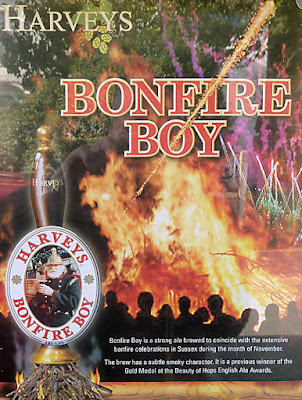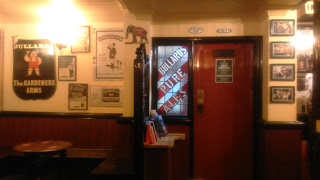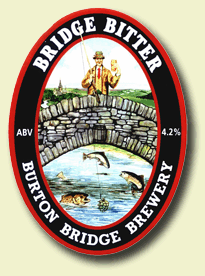Lewes Bonfire or Bonfire, for short, describes a set of celebrations held in the town of Lewes, Sussex that constitute the United Kingdom's largest and most famous Bonfire Night festivities, with Lewes being called the "bonfire capital of the world."
Lewes is home to the largest and most celebrated of the festivities in the Sussex bonfire tradition. There are seven societies putting on five separate parades and firework displays on the 5th, and this can mean 3,000 people taking part in the celebrations, and up to 80,000 spectators attending in the small market town which has a permanent population of just under 16,000 people.
Each Society has something different to offer. Nevill Juvenile Bonfire Society, for instance, is specifically for children. South Street used to be a juvenile society too, but over the years has changed into an adult one. Waterloo, while an adult society, is perhaps more family-oriented than some others, while the Cliffe, Commercial Square and Lewes Borough societies cling proudly to their respective ancient traditions.
 |
| https://commons.wikimedia.org/wiki/Category:CC-BY-SA-2.0. |
As well as the effigies, 17 burning crosses are carried in procession, through the town in memory of 17 Protestant martyrs who were burnt at the stake in Lewes for their faith, during the reign of Queen Mary. The various Bonfire Societies congregate at the War Memorial in the centre of town, where a wreath-laying ceremony takes place as an act of Remembrance for the war dead of Lewes. Afterwards each society marches to its own fire site on the edge of the town, where there a large bonfire and firework display takes place and the various effigies are burned.
Whilst marching nearly all members carry torches, some ignite and drop bangers, locally known as "rookies", (short for rook scarers), and some carry the burning crosses, banners, musical instruments or burning letters spelling out the initials of the society. Many of the marchers wear "smuggler uniforms" (striped jumpers, white trousers, black boots and optional red hats), with each society having a different coloured jumper. Members have to make or buy their own costumes. Torch-making is a time-consuming process and begins in September, or even earlier, with many society members joining in.
 |
| https://commons.wikimedia.org/wiki/Category:CC-BY-SA-2.0. |
Despite being just an hour’s drive away from Lewes, for a number of reasons I have only attended its famous November 5th celebrations on one occasion. That was back in 1987, when two companions and I caught the train to Lewes in order to experience the Sussex town’s bonfire activities for ourselves. Instead of the more usual route via Redhill, we decided to travel via St Leonards, as one of our number was boarding the train at Tunbridge Wells.
After changing trains at St Leonard’s, our journey took us into Eastbourne before heading west towards Lewes. The journey from Polegate onwards is quite spectacular, as the railway follows a natural gap in the South Downs. The downs form an impressive and slightly foreboding backdrop to the scenery, and as we journeyed on through such delightful stations as Berwick and Glynde the late autumn sunshine and a cloudless sky only added to the beauty of the surrounding countryside.
Arriving in Lewes just after midday, we made straight for the Royal Oak; then a stylishly decorated Beards pub, situated at the top of Station Street. From here we went on to the Brewers Arms, an imposing red-brick pub originally built for the former Croydon brewers Page & Overton, as the moulded brickwork plaques at the entrance still testify.
 The next port of call was the Lewes Arms where we were surprised to witness a group dressed as cavaliers sitting drinking at the bar. They were from one of the local bonfire societies, and were the first of many such groups of people in fancy dress that we were to encounter that day.
The next port of call was the Lewes Arms where we were surprised to witness a group dressed as cavaliers sitting drinking at the bar. They were from one of the local bonfire societies, and were the first of many such groups of people in fancy dress that we were to encounter that day.Finally, we ended up in the Black Horse, where we encountered a substantial number of revellers dressed as vikings. The "Beards" ales in this particular pub were especially fine, and it was a shame when time was finally called. Nevertheless we departed with good grace and headed off back towards the centre of town in search of some more solid nourishment.
As I mentioned earlier, that particular November 5th was a fine late autumn day, without a cloud in the sky and not a breath of wind either. Such days however invariably lead to cold and frosty nights, and as we left the Black Horse the air had a distinct chill to it, giving one the feeling that it would not be long before temperatures started to drop very rapidly. As we approached the brow of the steep School Hill that leads down to the River Ouse, we were rewarded by the sight of Harvey’s Brewery set against the backdrop of the South Downs. Steam from the brewery was rising vertically into the still cold air, and as we descended the hill the sun was already starting to sink in the sky, before finally disappearing behind the hills away to our left. You could feel it getting colder and see the mist beginning to rise from the river as we approached the Cliffe area of Lewes, and we were all glad that we had come warmly dressed and well wrapped up against the cold.
They take Bonfire night very seriously in this part of Lewes, and of the five Bonfire Societies Cliffe is probably the most anti-papal of them all. The reason for the anti-Catholic feeling pre-dates Guy Fawkes and his fellow conspirators by over a century. It arises from the time when, during the reign of Queen Mary, 17 Protestant martyrs were burnt at the stake in Lewes for their faith. This hatred for Rome and its church later found a new refuge following the discovery of the gunpowder plot, and numerous "Bonfire Societies" can now be found in Lewes, as well as many of the surrounding villages. The anti-papal theme is repeated in the "Bonfire Prayers" - the last verse of which reads:
"A penny loaf to feed old Pope,
A farthing o' cheese to choke him,
A pint of beer to rinse it down,
A faggot of sticks to burn him!
Burn him in a tub of tar,
Burn him like a blazing star,
Burn his body from his head,
Then we'll say old Pope is dead!
Hip, hip hoo-r-r-ray."
A farthing o' cheese to choke him,
A pint of beer to rinse it down,
A faggot of sticks to burn him!
Burn him in a tub of tar,
Burn him like a blazing star,
Burn his body from his head,
Then we'll say old Pope is dead!
Hip, hip hoo-r-r-ray."
The bonfire societies meet throughout the year, holding various fund-raising activities to ensure both a spectacular display of fireworks on the night and also to provide money towards the costs of the elaborate costumes their members wear as part of the celebrations. Bonfire Night in Lewes itself is always celebrated on the 5th of November, except when the 5th occurs on a Sunday. When that happens, the festivities are held on the preceding Saturday instead. By tradition, Bonfire Night celebrations in the surrounding villages take place either side of November 5th, so as not to detract from the main event in Lewes, and also to allow members of other societies to visit, or take part in the town's celebrations. Bonfire night in the villages is usually celebrated on a Saturday, unless, of course it happens to fall on the 5th November.
The fear of public disorder goes back to the last century, when events often did get out of hand. Pitched battles were fought in the streets, on several occasions, between the police and some of the more high-spirited "bonfire boys". According to contemporary sources, "great rioting" occurred in 1838, whilst in 1847 "170 of the principal tradesmen and other respectable inhabitants" were summoned to be sworn in as special constables. On their way to a meeting on the night of November 4th they were attacked by Bonfire Boys in the High Street. The following night, the riot act was read by Lord Chichester from the steps of County Hall. In those days, bonfires were actually lit in the town’s streets, so one can imagine the chaos as well as the threat to life, limb and property in general. In these more "enlightened times" the bonfires and firework displays are properly organised, and take place in open fields away from the town centre.
Feeling suitably chastened, we adjourned to a nearby cafe, where over a warming and very welcome cup of coffee we waited for the festivities to begin. One tradition, that has survived to this day, is that of hurling a blazing tar barrel into the River Ouse. In former times, lighted tar barrels were rolled along the High Street and down School Hill, but this practice has now been outlawed by the authorities. Instead, the lighted barrels are now pulled along on sturdy metal carts.
 |
| https://commons.wikimedia.org/wiki/Category:CC-BY-SA-2.0. |
Exciting stuff! The programme also prints a warning to the authorities that "Bonfire is a force to be reckoned with", and that the societies will not tolerate attempts by the police and other authorities to "dilute the event into a tame carnival", this action coming under the guise of "public safety". It is hardly surprising then that past "Enemies of Bonfire" have included the Chief Constable of Sussex and prominent local politicians.
Finding a suitable place to stand, opposite the war memorial and wrapped warmly against the cold, we watched procession after procession arriving to pay their respects to the town's war dead. The fact that November 5th is so close to Armistice Day means that the dead of two world wars are also commemorated, as well as the Protestant Martyrs of the 16th Century.
Shortly after it was time to leave. Rail journeys between Lewes and Tonbridge involve quite a roundabout route, following the truncation of the direct line at Uckfield in 1969. This coupled with the closure in 1985 of the line between Tunbridge Wells and Eridge means that there is no longer a direct route between the two towns. The upshot of all this was that we had to catch the half eight train from Lewes in order to guarantee making our connection for Tonbridge at Redhill.
The station was absolutely heaving when we arrived; British Rail having lain on additional trains in order to cope with the night's huge influx of visitors. I don't remember much about the journey home, but I do remember having a king-sized hangover the next day.
If you do get the chance to attend next year’s Bonfire
Celebrations, I can strongly recommend it. Assuming the rail dispute is settled,
then travelling by train is by far and away the best option. If you do choose
to drive, you will have to leave your car some distance away from the town centre,
as the streets are closed to traffic. You will then have to walk into Lewes.
A better bet is to book a hotel or B&B room for the
night. That way you can stay until the end, and also combine your stay with a
look around this most attractive East Sussex town.
THIS BLOG claims no credit for any images posted on this site unless otherwise noted. Images on this blog are copyright to their respectful owners. If there is an image appearing on this blog that belongs to you and do not wish for it appear on this site, please E-mail with a link to said image and it will be promptly removed.





































